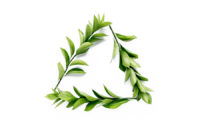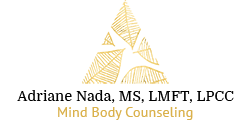
There are many parts to the “self”, which make up our overall identities. Some of these parts are in balance, strengthening our egos and allowing us to interact well in the world. Other parts, typically the ones we are less aware of, represent more of our shadow sides – limiting our potential, increasing anxiety and creating conflict.
Shortly after completing graduate school, I began working as an intern for a local domestic violence agency in Southern California. In an effort to explain the complex dynamics of intimate partner abuse, my supervisor introduced me to what he referred to as “The Triangle of Death”, which continues to be my favorite name for this concept. Officially, Stephen Karpman designed this triangle of roles (following the theoretical principles of Transactional Analysis Therapy), which he named the Karpman Drama Triangle. The three parts consist of: The Persecutor, the Victim and the Rescuer. Even though I learned this model within the context of intimate partner abuse, I see it everywhere now. We are living in a polarized, fearful time, which has been fueled by social media and exacerbated by the pandemic. The “us vs. them” or “freedom vs. tyranny” perspective defaults to the roles of the Drama Triangle. If we are approaching life and our relationships from the stance of the Persecutor, the Victim or the Rescuer, the cycle of unease and conflict continues as each role plays off the reactions of the other.
I like to use the Drama Triangle in conjunction with Carl Jung’s archetypes. In the shadow profile, the Persecutor (Perpetrator, Bully, Coward, Harasser) is often insecure underneath an appearance of pseudo confidence. Instead of challenging those insecurities, they are projected on to other people and situations. The Victim (Accuser, Sufferer, Martyr) lacks agency and responsibility and therefore, remains helpless. The Rescuer (Knight, Healer, Hero, Servant) gives to others in order to get love and acceptance in return. When we are locked into the shadow side of any of these roles over extended periods of time, we internally manifest shame, fear, rage and sorrow. And while the cycle continues, we are more likely to shift to different roles on the triangle. All persecutors were once victims and victims often enable persecutors to continue abusing them by rescuing.
The goal is to first bring more awareness to how the shadow side of these roles (or archetypes) surfaces in your life experiences and relationships. With more self-awareness, there are more choices about the roles we want to play and the stories we want to create. Then, take opportunities to step out of the triangle and refuse to play the game even when others are trying their best to pull you back in. It could be another driver on the freeway who, while driving erratically, flips you off and swerves in front of you. It could be someone who is not wearing a mask during the pandemic (or someone who is wearing a mask during the pandemic). Does this bring out the self-defeating sides of the Persecutor,the Victim, the Rescuer, or an integrated response from the whole self?
